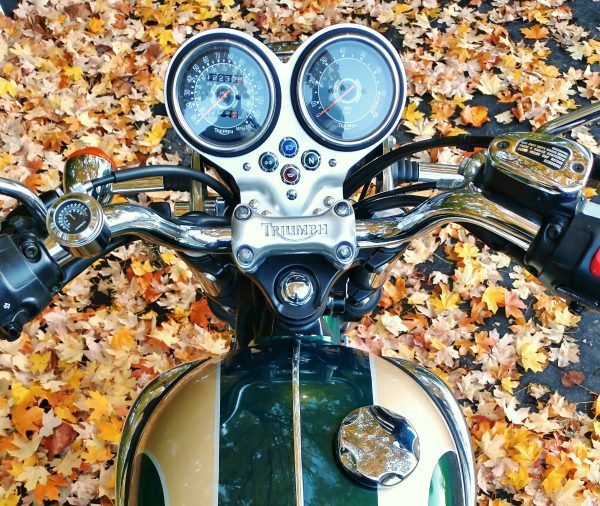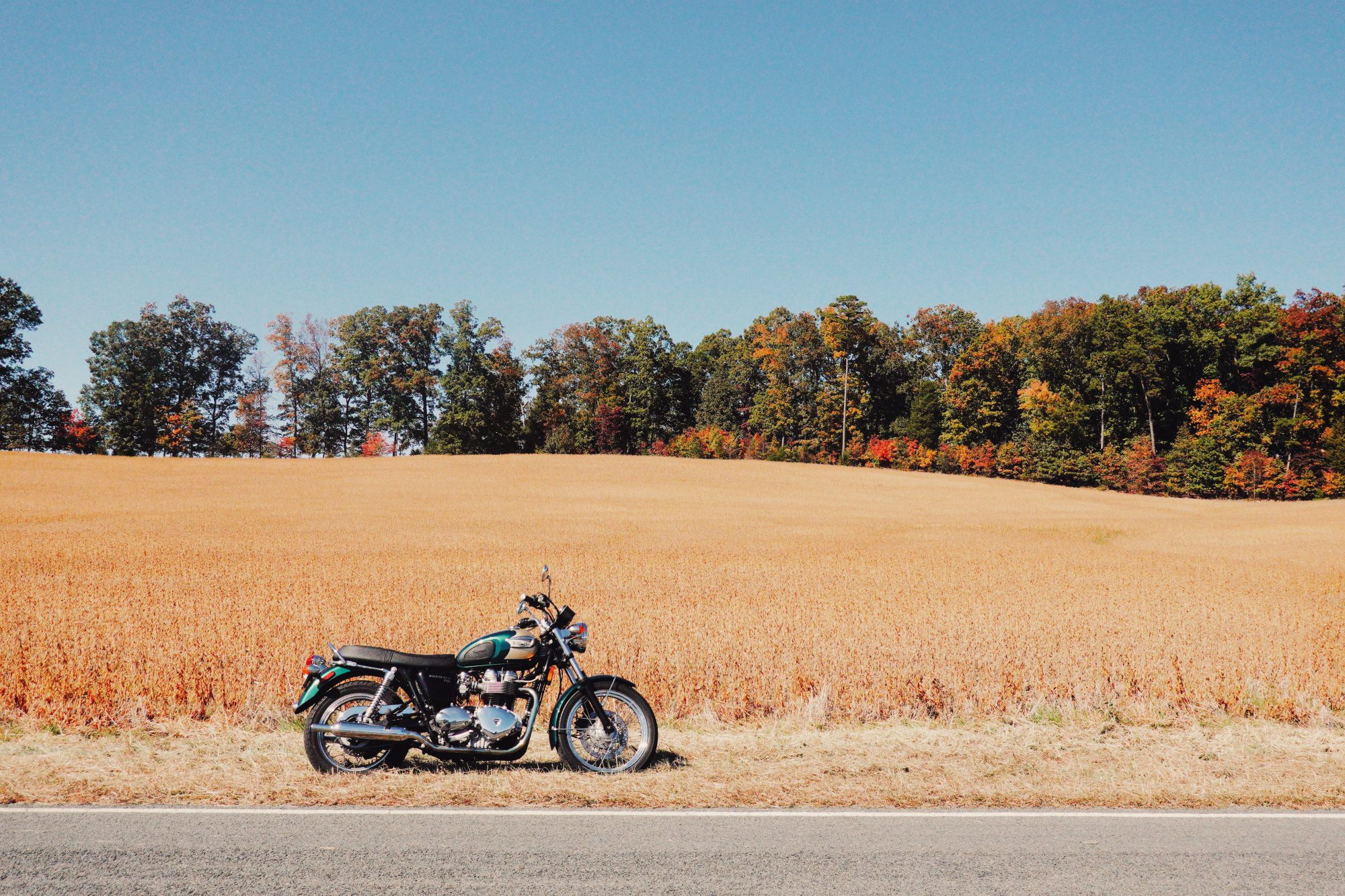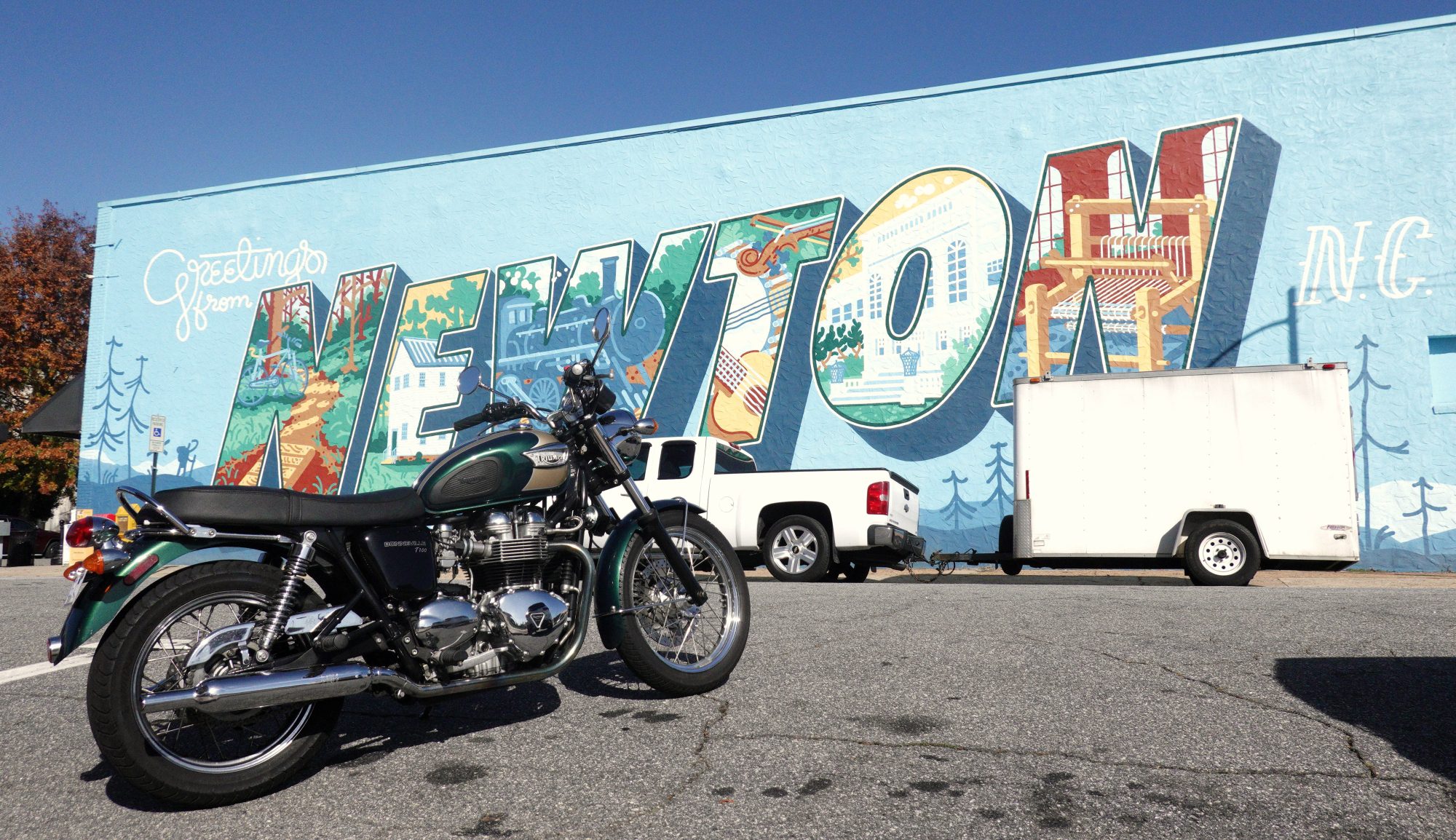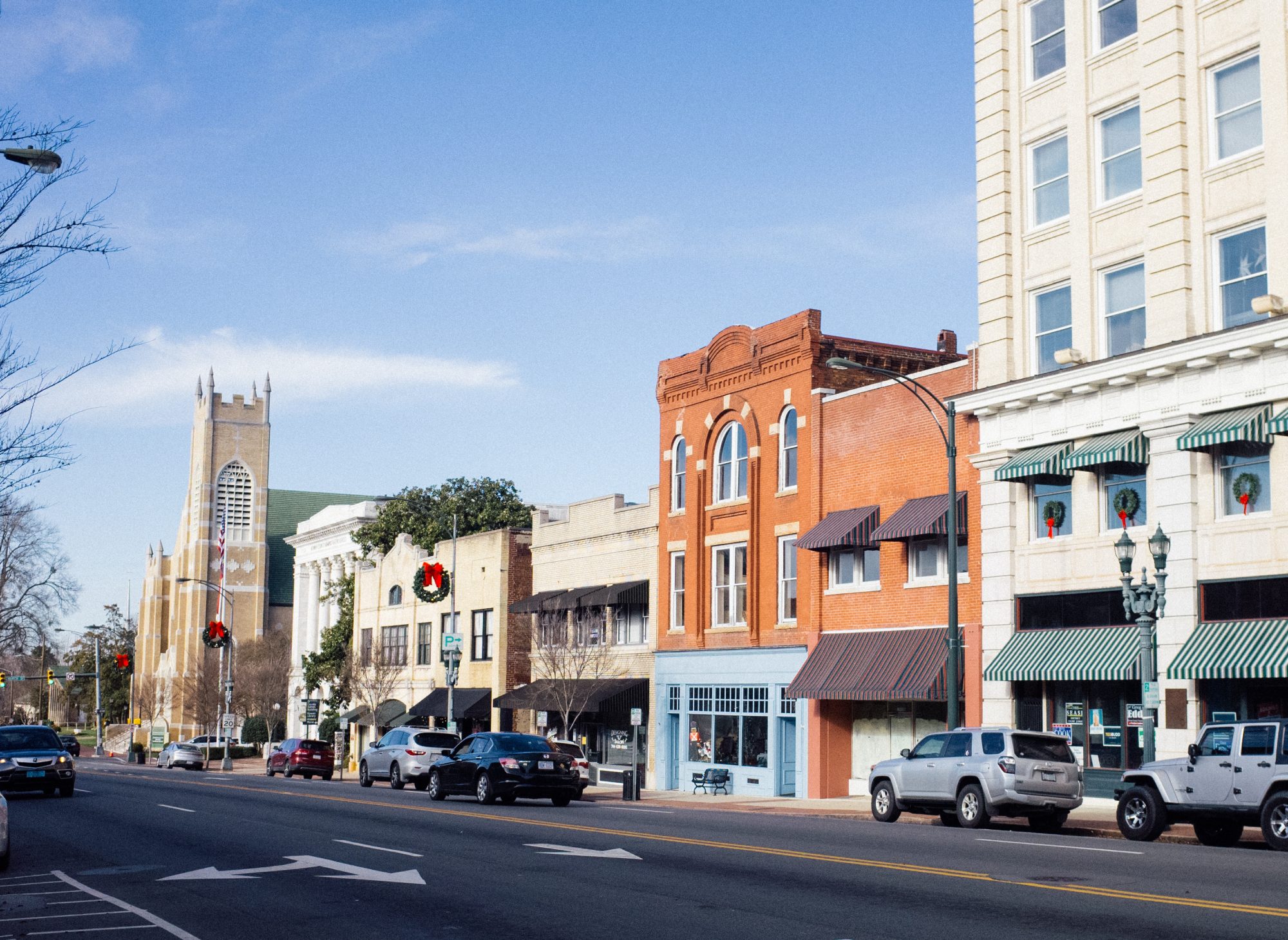Rediscovering our region on a motorcycle

At the end of last autumn, I set out to rediscover our evolving metropolis with a bit of caffeine.
Staking out the independent coffee shops that dot our region, I began an informal weekly motorcycle tour of the 14-counties that surround Charlotte’s urban center to observe and learn, but mostly to relax. Are the open roads around Charlotte that I cherished in the years before the pandemic still ‘open’? Are new people and cultures like me welcomed in communities around Charlotte? Are new joys waiting to be discovered among oscillating sentiments on how and why our city is growing rapidly, into something bigger and unknown? Importantly, I wanted to find out if the city I knew still existed somewhere in this new city that I now live in.
An Immigrant’s Introduction to the Charlotte Region
I moved to Charlotte fifteen years ago. As a new immigrant student, lean means dictated mobility in early days. Unreliable public buses and roads without sidewalks made knowing and feeling our region’s geography slow and stifling. But nevertheless, my slow sojourn into the ‘developed world’ was instructive. To my freshly imported eyes from a world brimming with people, Charlotte’s low density sprawl – a strange concoction of auto-driven peoplelessness and commerce – provided a good primer to the quintessential American suburbia.
At the same time, my graduate studies at UNC Charlotte narrated the country’s checkered urban transportation history. Along with my own travails to get to Walmart, I readily internalized high density, new urbanist growth principles.
This changed, however. As soon as I got a motorcycle.
On a bike, I liked low density and no people. I liked a city whose parts still felt rural. I liked the poplar-lined roads of Enochville and cotton fields of Locust for which I didn’t need a road trip or vacation. I liked sunsets in Gold Hill that didn’t end behind buildings or streetlights. I liked picnic tables in Midland on the sprawling parking lot of an ice cream shop. I liked breakfast rides to Lincolnton on dewy mornings of early autumn. I liked summer night walks in Davidson college after riding on Highway 115. I liked an incomplete, empty I-485 that covertly served as personal proving grounds. I lived about a mile from work but sometimes transformed this ten-minute walk into a forty-mile commute through backroads of Cabarrus and Stanly counties because bikes made my mornings. The lack of density was the charm.

My Return to the Region
But I knew this world was ephemeral. A developer-friendly town with a growing economy would eventually gobble open spaces. In the middle of post-pandemic inflation and a housing boom, I see Charlotte’s exurbs facing this inevitable stress-test. As I rode north on the Triumph, I could no longer recognize Odell School Road – once a serene green belt ride from Mallard Creek Road to Highway 3 towards Mooresville. New subdivisions, roundabouts, a Publix, cleared land, and pulverized earth now make an indelible bridge from Mecklenburg to Iredell County.
[Read more: Defining ‘urban,’ ‘rural,’ and ‘in-between’]
The story was hardly different on 16 to Newton or Waxhaw, 27 to Lincolnton, or Albemarle, 49 to Richfield, or York, 601 to Monroe, 29 to China Grove, or on most routes that led me out to the country. I see Charlotte in places I haven’t seen before. Makeshift steel fences guarding newly minted properties, building wraps that shout brand names, exposed pine frames, fresh dirt spilling to highways, cloaked traffic lights waiting to unveil – sights in our region that are now as ubiquitous as a Waffle House in Georgia. I thrived on the city’s edge, now on the same routes the city encircles me.

City Mural, Newton, NC
Sunday morning rides are busier, much longer, and not as green as before. Thirty-minute motorcycling loops from home are extinct but were real even two years ago. Air temperatures no longer drop as much when riding past county boundaries at night. Shadows of Charlotte’s concrete have grown longer, and it takes more horsepower, gearshifts and time to outrun them.
So, is it all doom and gloom for a biker here? Hardly. The pastoral Highway 200 is still the best route through Stanly County to skirt East Charlotte. Highway 49 beyond Mount Pleasant and 52 to Rockville are true rural delights. Highway 16 opens up near Denver into a beautiful country trail to Newton and Taylorsville. Shearer Road and Highway 150 to Salisbury on bright autumn afternoons are heaven to coast at 50 mph. The downtowns of Concord, Hickory, Statesville, Salisbury, Landis, China Grove, and Kannapolis are bustling. Monroe is both shedding its past and finding new footings of revival. Fort Mill preserves a lovely town center while expanding at pace. Waxhaw is pleasantly unrecognizable with its revitalized core. Lincolnton is still a quaint Christmas town but with new crowds; even a sedate Newton is keen to take positive spillovers of Charlotte’s growth. As new hubs emerge and thrive in the region, I start to adapt to Charlotte’s larger meaning and presence. Pastures and country roads didn’t go away, they now live on newly drawn edges.
[Read more: Carolinas Urban-Rural Connections]

Main Street, Salisbury, NC
This project is far from over. In fact, I feel like I only started when I discover new nooks and paths in our region on my weekly rides. I’ll seek new coffee shops, plan new routes that would bring back the old, and make vignettes of people and places of Piedmont that continue to grow, change and adapt as much as my sliced life on two wheels.